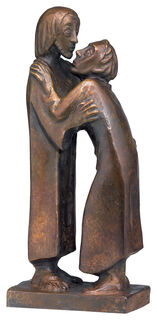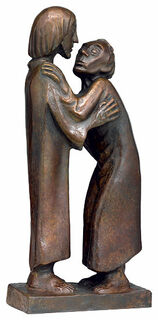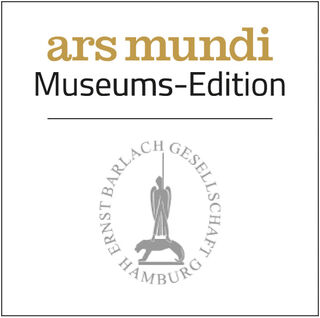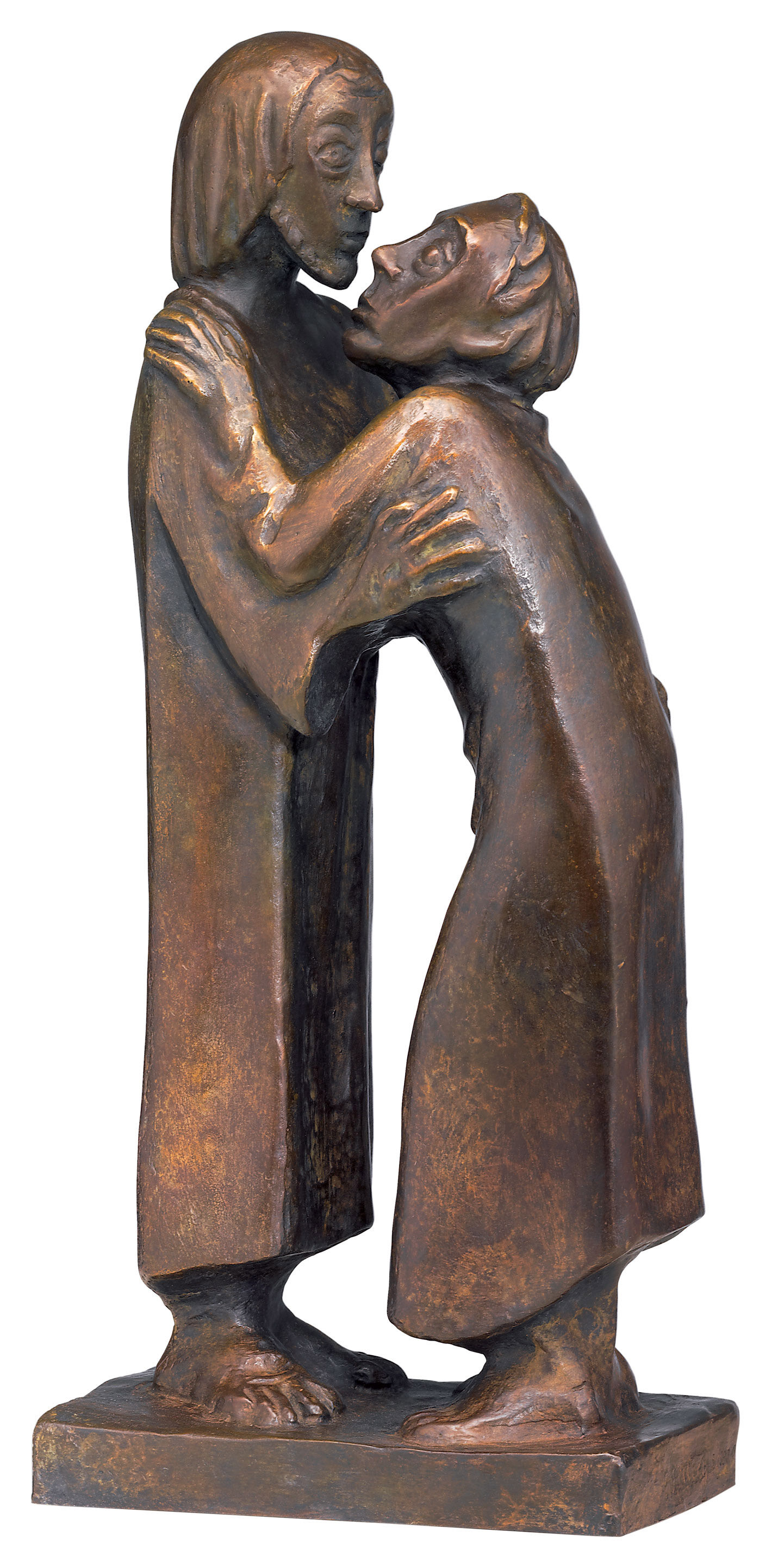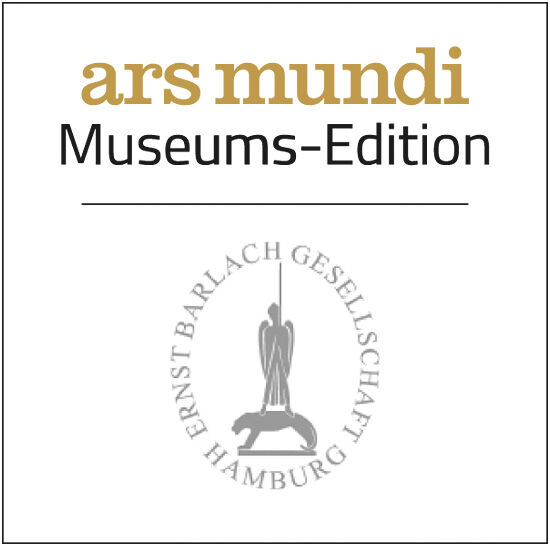Sculpture "The Reunion" (1930), reduction in bronze
Sculpture "The Reunion" (1930), reduction in bronze
Quick info
limited, 980 copies | numbered | signed | hallmarked | certificate | bronze | reduction | size 14 x 33 x 8.5 cm (w/h/d) | weight approx. 3 kg
Detailed description
Sculpture "The Reunion" (1930), reduction in bronze
"The Reunion" is one of the epoch-making works of modern sculpture: the deep humanity that characterises Barlach's work goes beyond the biblical scene depicted here. Incidentally, it has to do with an eyewitness: Thomas - in Aramaic, his name would be translated as "twin" - meets Christ, in whose resurrection, according to the biblical account, he only wanted to believe when he could see him with his own eyes and put his fingers in his wound.
Barlach stages the second of recognition, showing the moment of comprehension and the rising up to the truth. He has thus created more than a Christian iconography. The incarnate God is the "twin" of the human being, his compassion is a brotherly one. And in this realisation of the humanity of the Son of God lie hope and task - the demand for humanity - at the same time.
This limited edition was created in close cooperation with the Ernst Barlach Society. Sculpture moulded directly from the original and reduced in size (reduction). Fine bronze, cast by hand using the Lost-Wax-Process. Size 14 x 33 x 8,5 cm (w/h/d). Weight approx. 3 kg. Limited edition of 980 copies, individually numbered and with the signature "E. Barlach" taken from the original as well as the foundry hallmark. With numbered certificate of authenticity and limitation.
Customer reviews
Die Skulptur ist von sehr guter Qualität und hat eine wunderbare Ausstrahlung!
Sehr berührend. Die Skulptur hat wirklich eine besondere Aura.
Wie die anderen Male las ich bei ihnen etwas bestellt habe bin ich mit dem Ablauf und vor Allem mit der Skulptur sehr zufrieden.
Immer wieder beeindruckend
Die Ware entsprach voll unseren Vorstellungen. Sehr guter und schneller Service und optimale Verpackung. Wir waren sehr zufrieden
Mit dem Produkt, mit der Lieferung und Zahlungsabwicklung war ich sehr zufrieden
alles super geklappt
Sehr dicht am Original, sehr ausdrucksvoll. Wir freuen uns schon auf die 'Frau im Wind'.
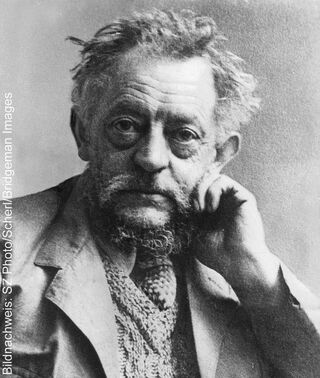
About Ernst Barlach
1870-1938, sculptor, writer and draughtsman
Ernst Barlach was born on January 2, 1870, in Wedel, Germany, and died on October 24, 1938, in Rostock, Germany. He holds an outstandingly special position within German Expressionism. As a graphic artist, draughtsman, writer and, in particular, a sculptor, Barlach created milestones in art history. Barlach's sculptural works of art have a special effect because they seek extreme experience of limits and their representation. They are works of multi-layered meaning with which he foregrounded the essence of the human being and that what stands above the self and the world.
Barlach's intention is rooted in the depths, the inner self. Shaped by war and challenging living conditions, he experiences both suffering and happiness. The human being is always the focus of his work: Ecce homo.
"I desire nothing more than to be a good and true artist as best I can. I believe that what cannot be expressed through the work can pass into the possession of another through forms. My pleasure and creative impulse continually revolve around the problems of the meaning of life and the other great mountains in the spiritual realm." (Ernst Barlach)
Ernst Barlach became an honorary member of the Academy of Fine Arts, Munich, in 1925. In 1933, he was appointed Knight of the Peace Class of the Order "Pour le mérite". In 1937, the National Socialists removed his works from public collections and spaces for being "degenerate art". Ernst Barlach died in Rostock on October 24, 1938.
Today, Ernst Barlach's works are an integral part of leading museums and collections and - if available - fetch record amounts at auction.
"The Singing Man" became Ernst Barlach's best-known sculpture, an icon of Modernism. It adorns illustrated books and posters worldwide, and the original edition is a permanent part of the collections of the world's major museums, including the Museum of Modern Art (MoMA) in New York.
An alloy of copper with other metals (especially with tin) used since ancient times.
When casting bronze, the artist usually applies the lost-wax technique which is dating back more than 5000 years. It's the best, but also the most complex method of producing sculptures.
First, the artist forms a model of his sculpture. It is embedded in a liquid silicone rubber mass. Once the material has solidified, the model is cut out. The liquid wax is poured into the negative mould. After cooling down, the wax cast is removed from the mould, provided with sprues and dipped into ceramic mass. The ceramic mass is hardened in a kiln, whereby the wax flows out (lost mould).
Now we finally have the negative form, into which the 1400° C hot molten bronze is poured. After the bronze had cooled down, the ceramic shell is broken off and the sculpture is revealed.
Now the sprues are removed, the surfaces are polished, patinated and numbered by the artist himself or, to his specifications, by a specialist. Thus, each casting becomes an original work.
For lower-quality bronze castings, the sand casting method is often used which, however, does not achieve the results of a more complex lost-wax technique in terms of surface characteristics and quality.
Artistic movement that replaced Impressionism in the early 20th century.
Expressionism is the German form of the art revolution in painting, graphic art and sculpture, which found its precursor in the works of Paul Cézanne, Vincent van Gogh and Paul Gauguin in the late 19th century. The Expressionists attempted to advance to the primal elements of painting. With vibrant, unbroken colours in large areas and with the emphasis on the line and the resulting targeted suggestive expressiveness, they fought against the artistic taste established by the bourgeoisie.
The most important representatives of Expressionism were the founders of "Die Brücke" (The Bridge): Ernst Ludwig Kirchner, Erich Heckel, Karl Schmidt-Rottluff, Max Pechstein, Otto Mueller and Franz Marc, August Macke and others.
Masters of Viennese Expressionism are Egon Schiele and Oskar Kokoschka. Among the sculptors, Ernst Barlach is the most famous.
Fauvism is the French form of Expressionism.
Term for an art object (sculpture, installation), which is produced in multiple copies in a limited and numbered edition according to the artist‘s will.
Artist's multiples have been called the most accessible and affordable art on the market.
A plastic work of sculptural art made of wood, stone, ivory, bronze or other metals.
While sculptures from wood, ivory or stone are made directly from the block of material, in bronze casting a working model is prepared at first. Usually, it is made of clay or other easily mouldable materials.
The prime time of sculpture after the Greek and Roman antiquity was the Renaissance. Impressionism gave a new impulse to the sculptural arts. Contemporary artists such as Jorg Immendorf, Andora, and Markus Lupertz also enriched sculptures with outstanding works.

